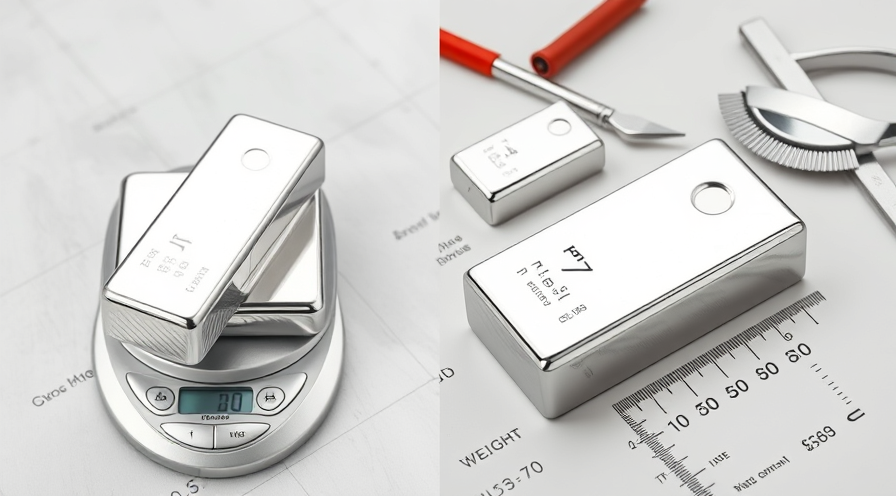Palladium vs. Platinum: Weight, Cost & Maintenance Compared
Palladium and platinum are two of the most esteemed metals in the jewelry and industrial sectors. While they may appear similar at first glance, these precious metals differ significantly in terms of weight, cost, and maintenance. Making an informed choice between palladium and platinum requires understanding these differences, especially for consumers seeking high-quality jewelry or investors eyeing long-term value. This article offers a detailed comparison of palladium versus platinum, focusing on weight, cost, and maintenance to help readers navigate their options confidently.
Weight Comparison: How Palladium and Platinum Differ
One of the primary considerations when choosing between palladium and platinum is their weight. These metals have distinct densities which affect how jewelry feels and fits.
The Density Factor
- Platinum is notably dense, with a density of approximately 21.45 grams per cubic centimeter. This high density gives platinum jewelry a substantial, heavy feel when worn.
- Palladium, in contrast, has a density of roughly 12.02 grams per cubic centimeter, making it significantly lighter than platinum.
This difference means that a platinum ring will weigh almost twice as much as a similarly sized palladium ring. For individuals who prefer durable yet lightweight jewelry, palladium may be the preferred option. On the other hand, those who value the heft and solid feel of their jewelry might lean toward platinum.
Impact on Design and Comfort
The weight differences affect the design possibilities and comfort level. Heavier platinum pieces may require sturdier settings to support the metal’s weight, whereas palladium’s lighter nature allows for more intricate designs without added bulk. This advantage makes palladium popular in contemporary jewelry designs where comfort is paramount.
Cost Insights: Evaluating Price Differences and Market Trends
Price remains a critical factor in the palladium versus platinum debate. Understanding current market trends and historical data around these metals can provide valuable context for buyers.
Market Valuation and Price Levels
- Historically, platinum was more expensive than palladium, primarily due to its rarity and demand in industrial applications such as automotive catalytic converters.
- In recent years, palladium prices have surged, and at times palladium even surpassed platinum in cost, driven by increased demand in automotive industries where palladium is crucial for emissions control systems.
- Despite recent fluctuations, palladium generally remains less expensive than platinum in retail jewelry markets, making it a cost-effective alternative without sacrificing precious metal quality.
Pricing Examples
For instance, a standard 14k palladium ring might cost 20-30% less than a comparable platinum piece of the same weight and design. However, prices can vary based on market supply, geopolitical factors, and economic trends affecting mining and production.
Maintenance Requirements: Long-Term Care for Durability and Shine
Maintenance is an essential factor for anyone investing in palladium or platinum jewelry. Each metal offers different advantages in terms of care and longevity.
Durability and Resistance
- Platinum is known for its exceptional durability. Its dense structure makes it resistant to scratches and general wear. When platinum is scratched, the metal is displaced rather than lost, which allows it to develop a patina that many find desirable. However, this patina can be polished away if preferred.
- Palladium also offers good durability but is comparatively softer than platinum and thus more prone to scratches. Over time, it may develop signs of wear more quickly, requiring more frequent maintenance.
Cleaning and Polishing
Both metals require routine cleaning to maintain their shine, typically using mild soap, water, and a soft cloth. Professional polishing can restore both palladium and platinum jewelry to a like-new appearance, but the frequency may differ:
- Platinum pieces generally need polishing less often due to their hardness and resistance to surface damage.
- Palladium may require more regular polishing to address surface scratches and maintain its luster.
Reactivity and Hypoallergenic Properties
Both metals are hypoallergenic, making them suitable for individuals with sensitive skin. They are also resistant to tarnishing, which simplifies their maintenance compared to metals such as silver.
Environmental and Ethical Considerations
In addition to physical properties and cost, some consumers weigh environmental and ethical factors when choosing between palladium and platinum.
Sourcing and Mining Practices
- Platinum mining is concentrated mainly in South Africa, Russia, and Zimbabwe. Mining practices and environmental impact vary widely by region and company policies.
- Palladium production often overlaps with platinum group metals mining, primarily in Russia, South Africa, and Canada.
Both metals have been subject to scrutiny regarding labor practices and ecological disruption. Ethical sourcing certifications and transparency from jewelers have become increasingly important, allowing consumers to make more informed and responsible purchases.
Recycling and Sustainability
Both palladium and platinum are highly recyclable. Many manufacturers and jewelers promote recycling used precious metals as a sustainable practice, reducing the need for newly mined metals and minimizing ecological footprints.
Summary and Final Thoughts
Choosing between palladium and platinum requires balancing weight preferences, budget constraints, and maintenance willingness. Platinum offers unmatched durability and a heavier, more substantial feel but generally comes at a higher cost. Palladium presents a lighter, more affordable alternative with excellent hypoallergenic properties, though it may require more frequent polishing and careful maintenance.
For jewelry buyers and investors alike, understanding these key differences can lead to a more satisfying purchase that aligns with lifestyle and long-term expectations. Whether one opts for the timeless weight and prestige of platinum or the modern lightness and value of palladium, both metals represent excellent choices in the realm of precious metals.
Readers are encouraged to explore certified sources and professional jewelers to examine pieces firsthand and discuss their specific needs. Sharing this knowledge can help expand awareness and appreciation for these unique metals across the jewelry and investment landscape.
